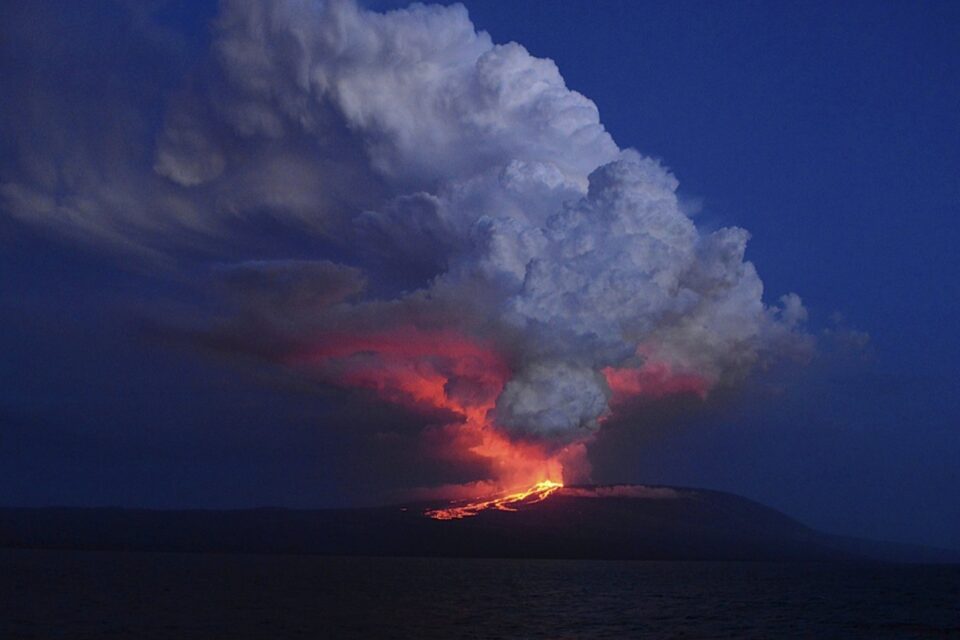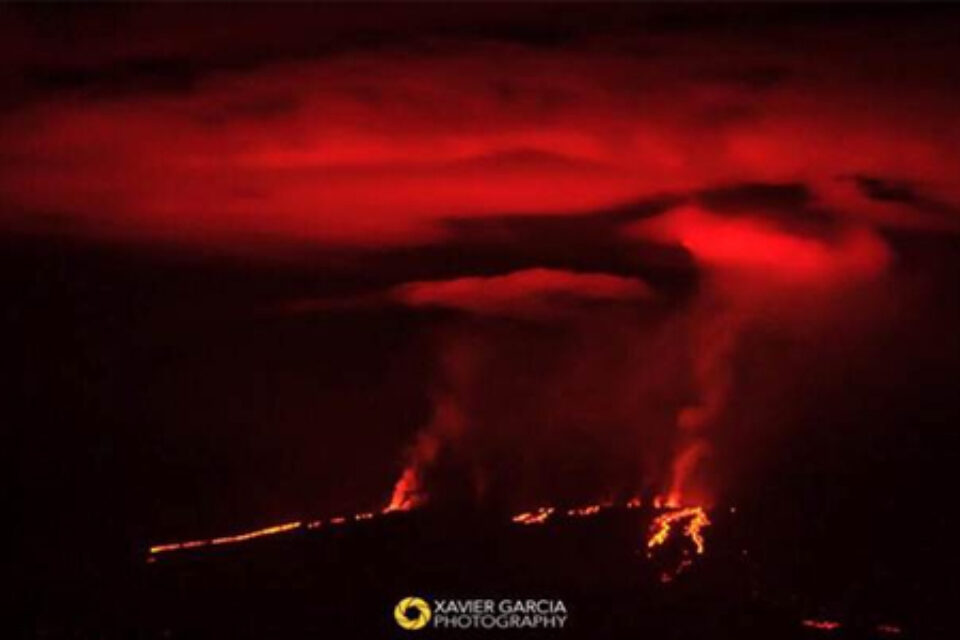

Wolf Volcano
Wolf Volcano! The very name conjures images of bygone eras, of an evocative, remote and harsh environment rarely visited...
Wolf Volcano! The very name conjures images of bygone eras, of an evocative, remote and harsh environment rarely visited. Yet, for all the glossy tourism brochures, that is still very much the case. The volcano is aptly named after a German geologist, for geology still dominates this most elemental area of our planet, as demonstrated on 25 May when Wolf erupted again. I have been fortunate to view Wolf Volcano from many directions; from Punta Espinosa on the tip of Fernandina to the west, from the north sailing around the top of Isabela, from Santiago and Rabida to the east and from Tagus Cove on Isabela itself to the south. I have seen Wolf in the height of the midday sun with heat shimmering off the dark basalt lava flows, early in the morning before the sun is up becalmed at the entrance of the Bolivar channel, and under an ethereal moonlight. Wolf gives you that tingle factor; serene and enigmatic, largely untouched yet alluring, and clearly in turmoil below the hazy summit.
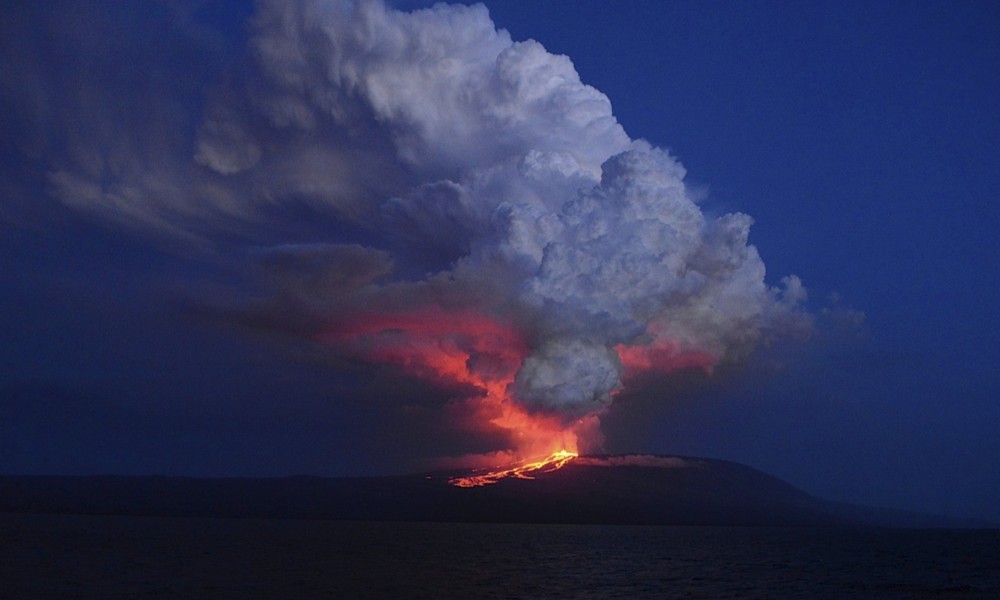
However, I have never seen it whilst erupting – in anger, demonstrating the full force of its ‘birth right’, although to my regret it was only a matter of two weeks between my last sighting and the present eruption. Whilst it’s been 33 years since Wolf last erupted, the volcanoes on both Isabela and Fernandina send out regular reminders of the force which lies hidden beneath them, for it’s volcanic eruptions that first made the Islands above the hotspot deep in the Earth’s core.
Species have evolved in Galapagos over a timespan which evidently include many such eruptions; their populations are often small in this part of the archipelago due to relatively strong currents, wind direction and a general lack of sustenance amongst the newly formed land. But they have survived, albeit with huge variability in numbers at any given time. Their populations will fall seemingly catastrophically only to recover spectacularly.

Until now? For the situation facing two critically endangered species on or near to Wolf Volcano is truly critical for reasons beyond environmental unpredictability.
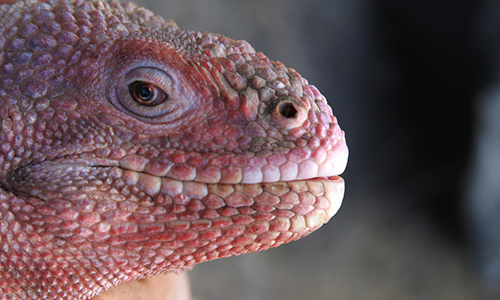
The Galapagos pink iguana, only described as a new subspecies in 2009, has perhaps 200 mature individuals as its entire population. The surveys that have been conducted over recent years have not found a single juvenile. In International Union for the Conservation of Nature ‘speak’, this means there are no juveniles to be recruited into the mature population; a recipe for diminished numbers in the future. Speculatively this is believed not to be a consequence of natural factors, but as a result of introduced black rats and feral cats, both of which are known to predate young iguanas up to the age of 3-4 years, and both are known to have made it as far north as Wolf Volcano. So, it may be that the resilience of the population to recover from a potential loss due to environmental stochasticity (variability) might be diminished due the indirect impact of humans.
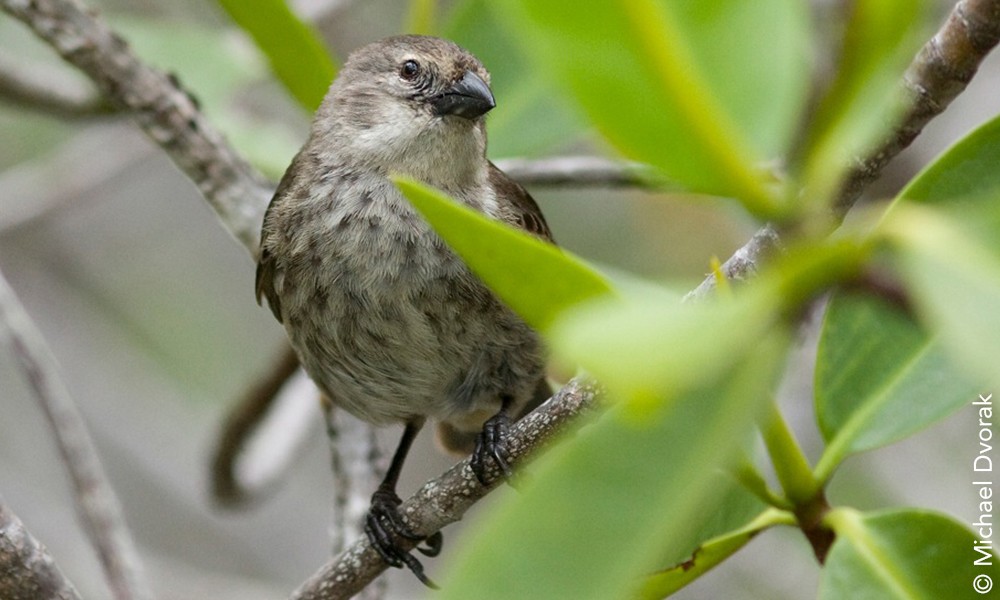
The other species at risk on this occasion is the mangrove finch, found in just 32 hectares 20-30 km south of the volcano. In this case, there are only 80 or so individuals in two tiny patches of mangrove forest; an area of mangrove that has higher trees than surrounding stands and protected by a sand bar – a rare combination leading to rich leaf litter and abundant food. These finches however face even more pervasive threats than the pink iguana, from the parasitic fly Philornis downsi, in addition to the threats from rats, an introduced paper wasp, the introduced Ani (a magpie-like bird), human disturbance and the endemic Galapagos racer (a small snake agile in the trees as well as on the ground). The mangrove finch is subject to significant conservation effort led by the Galapagos National Park and the Charles Darwin Foundation, supported financially by the Galapagos Conservation Trust, but it’s clearly at risk being so range constrained. Lava flows, smothering ash deposits, volcanic gases or significant land movement could all spell the end for this tiny area of habitat. Irrespective of our conservation effort, a loss of habitat would likely lead to the loss of the species.
Fortunately, the present lava flow from Wolf Volcano is heading south west, missing the pink iguana on the north slopes and the mangrove finch to the south. The eruption may also be weakening with lava no longer reaching the coast. Although pink iguanas tend to congregate around the rim of the volcano at this time of year, and mangrove finches are in full fledgling-rearing mode, early ‘paper-based’ assessments of the situation (not yet from the field) suggest a stroke of good fortune. The direction of the lava flow and the relatively small-scale eruption has reduced the immediate risk to both critically endangered species. Of course, a volcano is a force unto itself and all this might change.
This situation does show, however, that the time we have available to support species whose weakened populations can be partly attributed to man’s impact is not of our choosing. In a volatile environment such as Galapagos, and indeed elsewhere, the natural world sets its own timetable, the years we feel we need, or consider might be available, to save a species may transpire to be only days. It is incumbent upon us to do what we can to conserve Galapagos species, to help populations reach their natural levels of resilience as, in a place as harsh and unforgiving as Galapagos, anything less may simply not be enough.
Related articles

